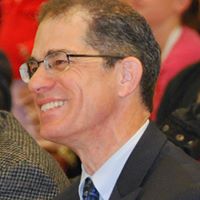Bullying Prevention & Awareness Week at St. Francis Xavier
During Bullying Prevention and Awareness Week (November 17-23), the students and staff at St.Francis Xavier High School sent a loud and clear message that bullying is not a part of their school culture. In addition to forming a "No to bullying" circle in back of the school near the bus loop, homerooms also participated in a classroom door decorating contest that focused on bullying awareness and prevention.
|
St. Jerome Canned Food Drive
St. Jerome students and their families came together over the past month to gather and donate over 3500 food items for the Shepherds of Good Hope. This is 300 more than the number that was collected last year.
Of course, a little friendly competition is always a great source of motivation. Principal Mr. McGarrity challenged the three divisions - kindergarten, primary and junior - to keep a tally of what they brought in. The class in each division that brought in the greatest number of cans was treated on Friday, December 6 to a lunch cooked by Mr. McGarrity and Vice-Principal Mrs. Langdon. Congratulations goes to Mrs. Hutt’s, Ms. Somers’ and Mrs. Nisbet’s classes.
Book Review: Building & Connecting Learning Communities
by Steven
Katz, Lorna M. Earl, & Sonia Ben Jaafer
In Building & Connecting Learning
Communities, the authors begin by stating that networked learning
communities can be powerful mechanisms for school improvement but only if
important preconditions are in place. They have drawn upon their extensive professional
development and research experience to identify these enablers.
The three
enabling factors they identify for successful networked learning communities
are as follows:
-
Clear
and defensible learning focus for students, teachers, and leaders;
-
Collaborative
inquiry that challenges thinking and practice; and
-
Both
formal and informal instructional leadership.
They
recommend as best “cross-school networks of within-school PLCs”.
While the
authors believe in the power and potential of collective wisdom, they also
recognize that it is not without its perils.
When working together is marked by groupthink, social loafing, or a
general lack of knowledge, the results can be disappointing and even
disastrous.
In Chapter 3, the authors elaborate on how to
set a clear and defensible NLC focus.
They maintain that, in order to avoid the activity trap, the focus
should be evidence-based and involve a combination of data and belief. To formulate a hypothesis for inquiry, group
members should first identify what they think they know about their focus and
then draw on data from student achievement and from teaching and assessment
practices. Most importantly, they
emphasize that the “glue” that will hold NLC’s together is a focus that will
impact on classroom practice and student achievement.
The
importance of relationships in collaborative inquiry is the focus of Chapter
4. Relational
trust - comprised of respect for each others’ dignity and ideas, belief in
each other’s competence, and confidence in each other’s belief in putting
students first – needs to be cultivated in any NLC. Furthermore, the relationships in a NLC need
to be based on a deep level of collaboration, which is beyond just sharing
ideas and stories. Group members must be
willing to make their tacit beliefs and assumptions known to each other and be
open to learning not only from each other but from the evidence uncovered
during the collective inquiry. By doing
so, teachers and leaders will move from what Michael Barber calls uninformed professional judgment to informed professional judgment. (47)
The authors
contend that there should be co-leadership in a PLC – both a formal leader and informal
leader. They explore 4 roles for formal leaders in PLCs:
-
Encouraging/Motivating others, particularly by modeling what “not
knowing” looks like and cultivating a climate of intellectual challenge in
schools;
-
Setting and monitoring the agenda, which means helping to establish
and maintain the focus (Leaders support staying the course by focusing on
alignment and by buffering.);
-
Sharing leadership, by enabling others with expertise to
also provide leadership;
-
Building capacity – personal, interpersonal, or
organizational capacity.
The main
contribution of informal leaders should be to provide instructional expertise.
Chapter 6 focuses on the key link between
student and teacher learning in professional learning networks. Once
the needs assessment is completed in a PLC regarding the knowledge that
students need to acquire, the next step in the professional learning cycle is
an assessment of the skills and knowledge teachers need to acquire to enable
the student learning. Only by deepening
teachers’ professional knowledge can students be engaged in new learning
experiences that will impact their learning.
The authors suggest the use of protocols, such as the CASL process (give
background on student, then have teachers share observations, and then move to
analysis and planning of next steps), during teacher moderation to avoid the
“niceness” culture and encourage them to debate assessment and instructional
practices.
Chapter 7
addresses the question, What should the
learning look like for leaders so that they can enable job-embedded teacher
learning in PLCs? The key learning
for leaders should be in how to create the conditions by which their schools
become true learning communities. Some
specific strategies offered for leaders are the use of critical friends, the use of protocols, and the use of reflective
diaries to track their own learning.
Building and Connecting Learning
Communities concludes
with some convincing arguments on how PLCs and NLCs sustain learning in
schools. For one thing, they push
educators, through a process of internal accountability, to take the lead in
their own professional learning. As
well, because they promote distributive leadership, they protect schools
against dramatic changes in direction from administrative changes.
A great feature of this book is the running
narrative which is a composite of sorts of the authors’ experiences of working
with numerous networks in a variety of countries.













